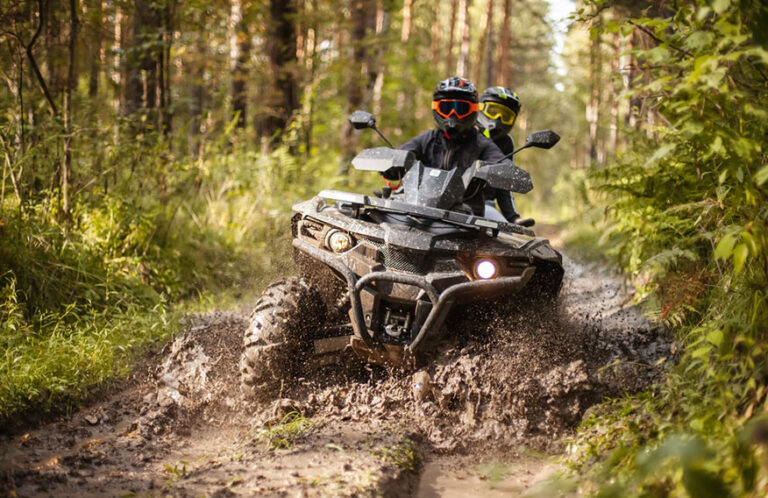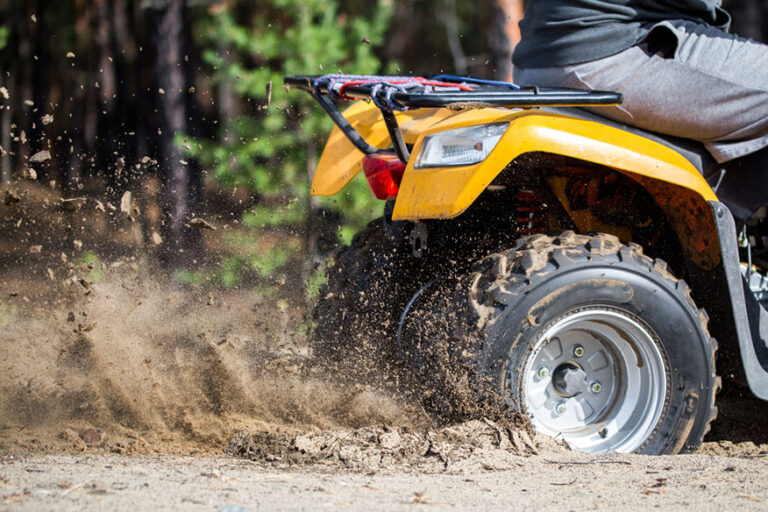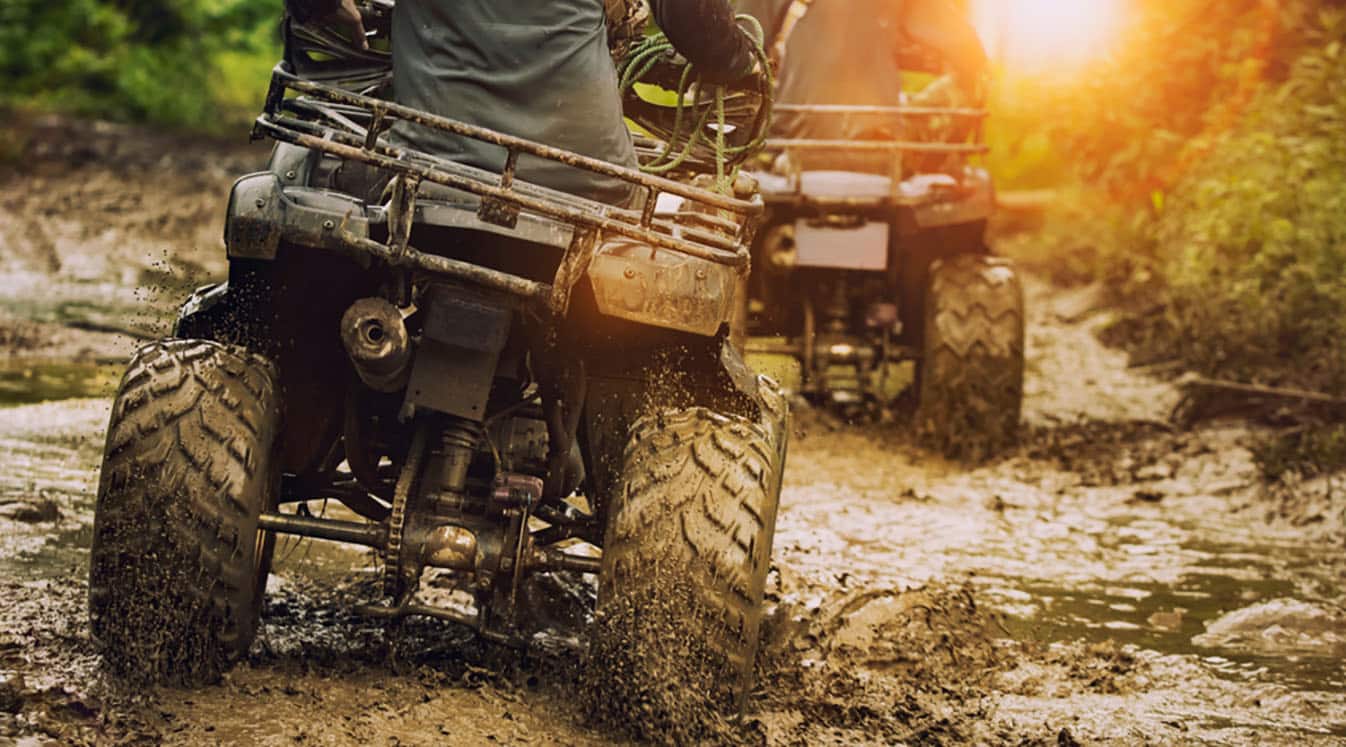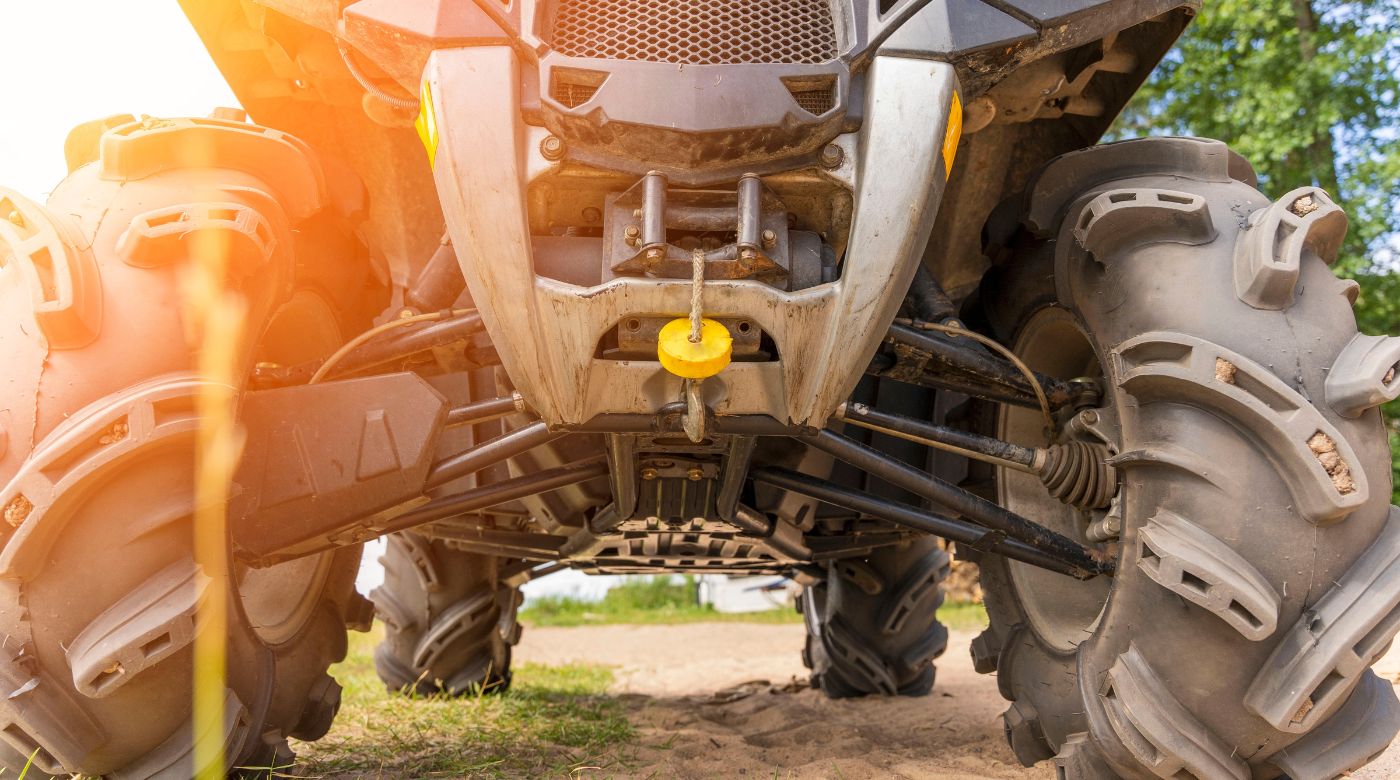All-terrain vehicles are made to be driven through muddy bogs and thick patches of dirt so you can make a mess to your heart’s content. Lots of riders actively search out the muddiest trails, revving their engines right after a fresh rainstorm. Even if you’re not actively searching out the mud, you might have to drive through on your way to your destination. A little bit of watery soil shouldn’t slow you down, but excess mud can damage your ATV and may even leave you stranded in the middle of nowhere.
Use this ATV mud riding guide to make sure your vehicle can weather the storm.
Prepping Your ATV for the Mud
Most ATVs are designed to handle the mud, but you need to modify your vehicle to do some serious mud-slinging. If the air intake valve gets clogged, it will suffocate the engine. Make sure the intake box is sealed with a lid. Install an aftermarket air filter to keep particulate matter out and one-way check valves that prevent water from seeping through without cutting off the air supply. If you plan on fully submerging your ATV in the mud, use snorkels to get the air intake and exhaust off the ground.
The radiator needs to be free of debris to let the engine cool. Insulate it from mud by reconfiguring the body so mud and dirt can’t get through.
Clean off the ATV before you depart and spray everything but the seat with WD-40 to prevent rust.
Insulate electrical components and connections in silicone and grease to keep moisture at bay.

What to Bring When ATV Mud Riding
Mud riding can increase your risk of injury. Be sure to wear the essential ATV riding gear, including a full-face helmet with a visor or half-face helmet with goggles, to shield your eyes and face from all the mud flying through the air or you won’t be able to see.
Wear ATV Riding Gear to Stay Safe in the Mud
Everything on your body should be mud-friendly. Choose light, moisture-wicking materials such as blended wool or synthetic fibers that dry quickly when wet so you don’t get bogged down by muddy clothes.
Riding on slick terrain can increase the risk of accidents. Wear knee, shoulder and elbow pads underneath your clothes in case you wipe out.
Your technology and accessories should be completely waterproof, including your GPS and wireless headset. Use durable off-road communication that connects automatically in range, so you don’t have to reset the device when your fingers are covered in mud. Cardo headsets use dynamic mesh communication to form a direct link between each unit to keep you and your companions connected, regardless of formation.
If some of your companions don’t have wireless headsets, you can use your hands to communicate instead. Learn about the most common ATV hand signals to help your group stay on the same page.
Bring dry clean rags to wipe yourself off if you get drenched. You can also use them to clean off your ATV and riding accessories if they are coated beyond recognition.
Mud ATV Riding Maintenance
Nothing puts your all-terrain vehicle through the wringer like regular mud riding. Moisture and dirt increase the risk of oxidation and clogs. Clean off your SXS after every ride through the mud. Check the battery life and electrical components for water damage. Use a brush to get rid of stuck-on dirt and grime. Clean in between the treads on your mud tires to restore traction. Ensure the air vents and exhaust are clear of debris. Check your fluid levels, including oil and coolant. The extra resistance from driving through the mud requires more throttle, which can deplete your oil supply. Clean off the radiator to let the engine cool properly. If the hot air can’t escape, the heat can damage the engine and burn through the coolant.

Without proper maintenance, off-roading through the mud can shorten your ATV’s lifespan. Don’t let dirt and moisture linger overnight.
How to Ride an ATV in the Mud
Mud riding is considered the most extreme form of ATVing. It’s hard to know where you’re driving when everything is covered in murky brown water. Use these tips to stay safe in the mud so you can go wherever the trail takes you.
When you’re ready to get wet, slow down and spend some time scoping out the off-road trail. Identify any potential hazards, including obstacles that may be hard to avoid on slippery terrain and deep waters that could ruin your engine. Go around mud holes, typically the deepest part of the water, to err on the side of caution.
Muddy trail riding increases your stopping distance, making it harder to come to a complete stop. The dirt fills the treads in your ATV, reducing traction. You’ll need more room and time to turn. Brake sooner than usual and take wider turns.
Forging through the mud puts additional strain on the ATV. Drive in the grooves of other riders to reduce resistance to make it easier to ride.
Controlling your speed is key to driving dirt bikes through the mud. Ease off the accelerator to avoid splashing the mud without losing your momentum. If you don’t mind wiping out, give yourself plenty of space to slide around and avoid rocks, trees and other hard surfaces that increase the risk of injury.
Maintain a slow, steady pace when transporting a group in a UTV to minimize splash and turbulence. Encourage your guests to sit still and spread out to balance the weight. Avoid steep hills that can cause mudslides and approach the incline at an angle when climbing.
Shift your side by side and wiggle the handlebars when you lose traction to help the vehicle make more contact with the ground. If you get stuck, you’ll need to use a winch or have a buddy tow you out of the bog. That’s why it always helps to go mudding in a group. Keep recovery equipment on hand in case of emergency and let the authorities know where you’re going in case you get stuck.
Just because the ground is wet doesn’t mean it’s safe to ride. Excess runoff and rainfall can make trails impassable. Check in with the ATV park to ask about conditions.
Use Waterproof Off-Road Communication to Coordinate with Your Group
Explore Mud Bogs Like a Boss
Off-road vehicles are the best way to experience the mud. They have the traction and suspensions to slosh around without breaking a sweat. The trick is maintaining control and cleaning off your ATV at the end of the day. Slow down, stay further away from obstacles and use your core to maintain balance when things get messy. With a little practice, you’ll be slinging mud like the best of ’em.





